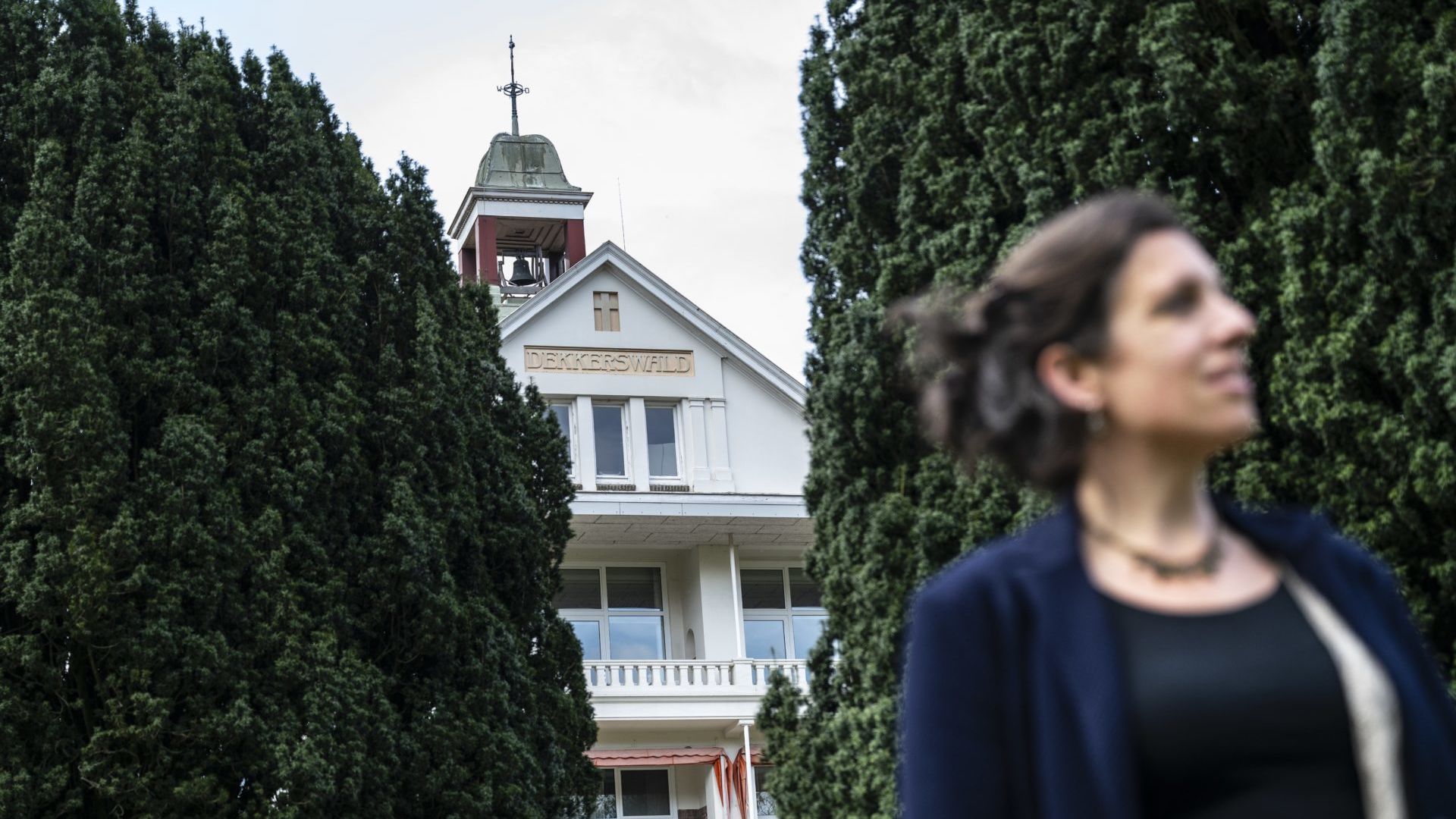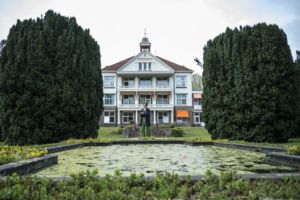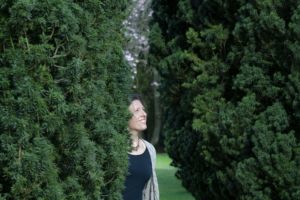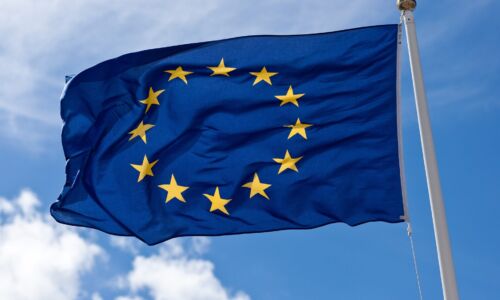Summer interview (4): ‘I woke up with COVID-19 and went to bed with it’
-
 Alma Tostmann. Foto: Bert Beelen
Alma Tostmann. Foto: Bert Beelen
She appeared on Nieuwsuur and LuckyTV while trying to keep the infection rate at Radboudumc as low as possible. For the past two years, the life of epidemiologist Alma Tostmann has revolved around COVID-19. But her passion is combating epidemics in developing countries. And the Lindy Hop.
COVID-19? It’s a conspiracy theory, says epidemiologist Alma Tostmann in a news broadcast on 15 December 2020. ‘Invented by HEMA, to encourage people to eat their sausages.’ A rather remarkable statement from a Radboudumc researcher. Eighteen months later, Tostmann has to laugh as she watches the video, which was not real, but a fake put together by LuckyTV. ‘I just went along with it, ha ha. My sister-in-law even gave me a HEMA sausage as a Christmas gift.’
Summer interviews
This is the fourth episode of a series of summer interviews. The articles also appeared in Vox magazine, which is available everywhere on campus. You can find the magazines our special magazine bins.
The video is telling for how well-known Tostmann has become in the past two years. In her role as epidemiologist, she was repeatedly asked to interpret the COVID-19 figures: on TV for Nieuwsuur, on Radio 1, and in a number of newspapers. Does testing for access make sense? How about closing down schools? At the same time, it was all hands on deck at Radboudumc, where as interim head of the Infection Prevention department, she was responsible for ensuring that the work could proceed as normally as possible throughout the COVID-19 waves. Especially at the start of the pandemic, the virus dominated her life, she explains on our walk in the Dekkerswald Park in Groesbeek.
‘Explaining things is part of the work of a researcher’
At the start of the pandemic, all these panicky graphs were going around, with exponential curves from Italian hospitals. Did you also feel frightened?
‘I was really surprised that Jaap van Dissel, from the National Institute for Public Health and the Environment (RIVM), kept saying for a long time that the risk of an outbreak in the Netherlands was low, even after cases had been confirmed in Italy, and at Carnival time, in February 2020. If you want to keep something out, you have to take immediate action, I thought. At times like this, I personally tend to jump into action. At Radboudumc, we immediately started preparing: we reorganised some departments, formulated protocols, and thought through scenarios, for example in case we were overwhelmed by COVID-19 cases. There was a feeling of: ‘We’re going to fix this; this is what we do.’ I like this kind of adrenalin and healthy stress.
I wasn’t frightened, but you do take that kind of stress home with you. I woke up with COVID-19 and went to bed with it. And I asked myself how close it would come to my life. Would my husband and I lose people in our immediate environment? Our parents, for example? Our children were also frightened in the beginning. Luckily, the virus never came that close.’
At the same time, you also made frequent media appearances during the pandemic. Both on TV and on Twitter.
‘That’s true. Clarifying and explaining things is part of the work of a researcher, I think. And it was really needed. Look, for example, at the last Christmas holiday, which was extended by a week. The government wanted to give schools the opportunity to remain open on Monday. This would have been a very strange move from an epidemiological perspective. It would have given everyone the chance to infect each other after all just before Christmas and it would have made the longer holiday pointless. So I made a passionate plea against it on Nieuwsuur. Later on, I heard from many schools that they talked about this fragment, and decided not to open their doors after all.’
Did you have to get used to the media attention?
‘The first time I appeared on the radio, I was really nervous. I asked my head of department (Heiman Wertheim, Eds.) whether it wouldn’t be better if he did it, because something might go wrong if I did it. ‘So what?’ he said. ‘You can go even if you’re nervous, can’t you?’ That was the response I needed. Now I make sure that I have a clear idea beforehand of the point I want to make, and no presenter will get me off track.’
Fellow researchers like Marion Koopmans are getting threats because of what they write on platforms like Twitter. Is this something you also experienced?
‘Not actual threats, thankfully. Sometimes I get reactions of the type ‘stop all that scaremongering!’. As if I enjoy it. But if I believe that things are going wrong with the policy, I will speak up, and I don’t mind if people disagree with me. On Twitter I’ve blocked words like ‘fear porn’, which really helps (she laughs). And I know by now which discussions are most polarised, such as vaccinating children.’
Tanzania
Tostmann (1980) grew up in Leidschendam. She studied Biomedical Sciences in Nijmegen, and completed her PhD in 2009 on the side effects of tuberculosis treatment in Tanzania and the spread of tuberculosis in the Netherlands. She spent a few years in Tanzania, together with her husband, malaria researcher and Radboudumc professor Teun Bousema. Another part of her PhD thesis was written in Dekkerswald, the former sanatorium in the Groesbeek woods, which currently houses Radboudumc TB patients and other patients requiring specialist care.
‘Look, there, on the second floor, that was my office,’ she says, pointing to the back of the original main building. The Japanese cherry blossoms tickles our nose, and the spring sun is reflected in the high windows – a sun that must have had a healing effect on the tuberculosis patients residing here in the first half of the previous century. ‘I always enjoyed working here. My office was larger than the one I have now at Radboudumc, and my thesis supervisor, Martin Boeree, was nearby. He was head of the Pulmonary Diseases department at the time.’
These are the last weeks that the Radboudumc pulmonary centre is located in Dekkerswald. In June and July, the patients will relocate to a brand-new building on the Erasmuslaan. Tostmann: ‘It’s much closer to the hospital, where we have really modern, flexible and patientfriendly spaces.’ The care for patients who may suffer from Ebola or other dangerous infectious diseases will be brought to a single location.
After completing her PhD, Tostmann left for a few years for England, only to return to Nijmegen with her family in 2012. From 2012 to 2019, she worked for the AMPHI academic workplace for public health (a partnership between municipal health centres (GGD), municipalities and Radboudumc), conducting research on the spreading and outbreaks of infectious diseases in the Netherlands. In 2018, she combined this with a temporary post as epidemiologist for the World Health Organization in a camp for Rohingya refugees in Bangladesh. Since 2019, she has acted as interim head of department at the Infection Prevention department of Radboudumc.
What did you do in Bangladesh?
‘The refugee camp in which I worked faced one outbreak after the other: diphtheria, measles, etc. And there was a fear of cholera due to the approaching monsoon season. These outbreaks were caused by people living too close to one another in poor hygienic conditions. By means of data analyses, I tried to provide insight into what the major problems were. This allowed local authorities to take targeted measures.’
What appeals to you about working in developing countries?
‘Partly, it’s the sense of adventure. But mostly the impact I can have with my work – there is still so much to gain, health-wise. This is close to my heart and I find it more interesting than the latest technological analysis gimmicks. Resources are hopelessly unequally divided in the world, which I find shocking. Look at tuberculosis, which still claims one and a half million lives every year. For decades, no new drugs were developed to treat it, because it’s primarily a poor countries’ disease. Now that the West is threatened by COVID-19, suddenly we’re doing everything in our power to develop a vaccine.’
Where does this ambition to make a difference come from?
‘In the family where I grew up, it was perfectly normal to serve the public interest. My father always worked for the government, and my mother in geriatric care. I also recognise this idealism in Teun. A lot of funding was made available for COVID-19 research, some of it at the expense of other diseases, such as malaria. This is something he finds very frustrating.’
‘COVID-19 strategies simply require steering from the top’
What did you find most surprising about the response to COVID-19?
‘How the role of communication was underestimated, as is the case with every infectious disease outbreak. Take for, example, the isolation policy for COVID-19. If you are infected, you are now expected to spend five days in isolation, unless your symptoms persist longer. That last condition is often left out in the communication, I noticed. As a result of which, the other day I overheard a person who was coughing at the chemist’s, saying: ‘I did my five days, so it’s OK.’’
In the Netherlands, people seem to be under the impression that the pandemic is over.
‘They may well be disappointed this coming autumn; the virus is by no means gone. At Radboudumc, we had to postpone operations until quite recently because so many employees were ill. I also find the long-term vision of the Dutch government unclear. How exactly are we going to monitor the virus, now that testing at the municipal health centre (GGD) is no longer required? Sometimes it seems like an all-or-nothing strategy. The government wants sectors like the catering services to come up with their own plans in case measures are needed again. But why should these sectors re-introduce rules such as 1.5 metres distancing if this leads to financial losses? Things like this simply require steering from the top.’
‘I do enjoy a bit of action’
Two years of COVID-19 have taken their toll on healthcare. Many healthcare workers are overloaded or have switched jobs. Did you also come up against your limits?
‘Well, I have to say that I’m happy things are a little quieter at work. I no longer have to drop everything to figure out how to deal with COVID-19 cases at the hospital, while postponing all other, regular work. And I have a nice outlet in the Lindy Hop. It’s a dance performed to old 1930s jazz music, which I’ve always loved, even as a child. In 2015, I joined a Nijmegen group, and was immediately sold. It’s a completely different world. The music is fantastic, and the scene very welcoming: there’s this easy-going, open-minded and international atmosphere. The dance steps are nice and loose, and not as precise as in ballroom dancing, which I really hate. With the Lindy Hop, the goal is mostly to create a nice dance together.’
That sounds like quite a contrast with dry epidemiology figures.
‘Ha ha, actually, the two are more alike than you’d think. It’s no coincidence that I chose to specialise in outbreaks. It’s where the action is. I enjoy the dynamic aspect of it: how does an infectious disease develop, and what can you do about it? Yearlong epidemiological studies that ultimately only answer one question are not my thing. I enjoy responding to what is happening and improvising. And actually, this is also what you do in the Lindy Hop: you’re constantly adjusting to your partner’s moves and following the music together, it’s all about going with the flow.’
Bring on the next COVID-19 outbreak, in other words?
‘I do enjoy a bit of action, yes. But now I mostly want to recover a bit from the past two years, and restart non-COVID-19 research that was put aside. COVID-19 has been a drama when it comes to health, but at the same time, professionally, it has been a very exciting time.’





